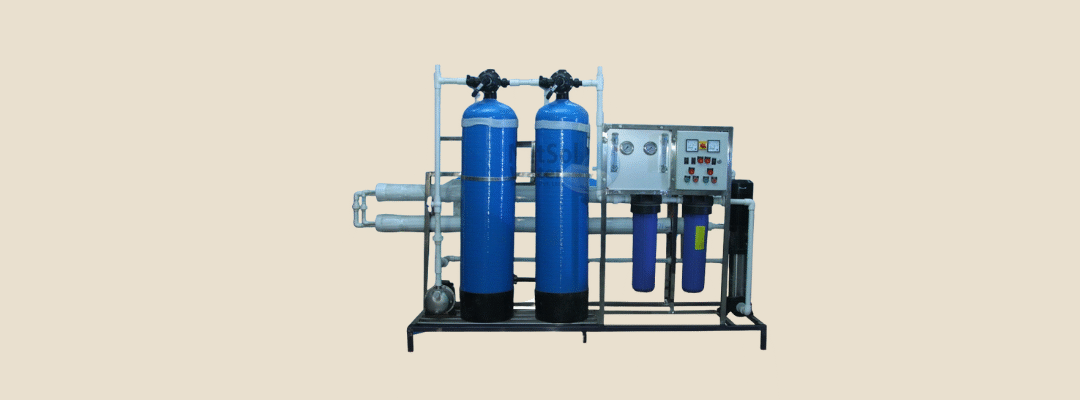Reverse Osmosis (RO) water plants are among the most effective and trusted water purification systems used in homes, offices, and industries. Yet, hesitation still exists — mostly due to misinformation and half-truths circulating online.
From claims that RO wastes too much water to the belief that it removes all beneficial minerals, these myths prevent people from making well-informed decisions. In this blog, we’ll debunk the most common myths about RO water plants and help you understand the real science behind the system.
1. Myth: RO Water Wastes a Lot of Water
Reality: While RO systems reject some water during the filtration process, modern RO plants are built with high-efficiency recovery systems that significantly reduce wastage.
Advanced RO units can recover up to 75–80% of feedwater, and many models now include reject water reuse features. That water can be used for non-potable purposes like cleaning, gardening, or flushing — making RO an eco-conscious choice, especially for water-scarce areas.
2. Myth: RO Removes All Essential Minerals from Water
Reality: Yes, RO removes both harmful and beneficial minerals — but that doesn’t mean you’re left with “dead” water. TDS controllers and mineral cartridges in modern systems add back essential minerals like calcium and magnesium.
The result? Balanced, safe, and great-tasting water suitable for daily consumption. Also, most natural water sources contain far more contaminants than beneficial minerals, so the benefits of RO far outweigh the loss — especially when using a properly configured unit.
3. Myth: RO Water Is Acidic and Harmful to Health
Reality: RO water may have a slightly lower pH due to reduced salts, but this does not make it harmful. The World Health Organization (WHO) and Bureau of Indian Standards (BIS) confirm that RO-treated water, when correctly filtered, is safe for long-term use.
Plus, many modern RO systems now include alkaline or pH-balancing filters, restoring the water’s natural alkalinity.
4. Myth: RO Plants Are Only for Large Industries
Reality: This is outdated thinking. Today, RO systems are available in sizes ranging from 25–50 LPH for homes to 10,000+ LPH for factories.
For example, a medium-sized bakery in Delhi improved water consistency and reduced appliance scaling after switching to a compact 100 LPH RO system — enhancing both product quality and equipment life.
Whether you manage a home kitchen, office pantry, clinic, or hospitality unit, there’s an RO system tailored for your capacity needs.
5. Myth: RO Systems Require High Maintenance
Reality: RO systems are not high-maintenance when properly serviced. Most units only need filter and membrane changes every 6–12 months, depending on your water quality.
Modern systems now feature:
- Auto-flush mechanisms
- Pressure and flow sensors
- Smart service indicators
These technologies make maintenance predictable and manageable, even for non-technical users.
6. Myth: Bottled Water Is Safer Than RO Water
Reality: Bottled water may appear convenient, but it’s not always superior. Many brands draw water from municipal supplies, and plastic bottles can lead to chemical leaching or microbial growth if stored in heat.
In contrast, RO water is purified at the point of use, ensuring it’s fresh, contaminant-free, and more cost-effective in the long run.
7. Myth: RO Water Has No Taste
Reality: RO water may taste different initially due to the absence of salts and contaminants, but post-carbon and mineral-enhancement filters restore flavor and texture.
What you get is clean, neutral-tasting water that’s ideal for drinking, cooking, and even sensitive processes like beverage preparation.
8. Myth: RO Purifiers Are Not Environmentally Friendly
Reality: Thanks to recovery-focused designs, RO systems now use energy-efficient pumps, reject water recycling, and smart flushing to reduce waste and power use.
And when compared to the plastic waste from bottled water, RO systems are far more sustainable and aligned with green business practices.
Frequently Asked Questions (FAQs)
Q1. Does RO water remove all minerals from drinking water?
No. Modern RO units use TDS controllers and mineral cartridges to restore essential minerals like calcium and magnesium.
Q2. Is RO water safe for long-term drinking?
Yes. It meets WHO and BIS safety standards when systems are well maintained.
Q3. How often should RO filters be changed?
Typically every 6–12 months, depending on usage and feedwater quality.
Q4. What can be done with RO reject water?
Reuse it for gardening, cleaning, or toilet flushing to reduce waste.
Q5. Are RO systems suitable for small businesses and homes?
Absolutely. There are models for every capacity — from a single family to a large institution.


Recent Comments